Supermicro X11DAC BIOS and Remote Management
Remote management access is the same as other Supermicro motherboards, enter the IP address and login with ADMIN/ADMIN and you are in. Note, we suggest changing this login as soon as possible.
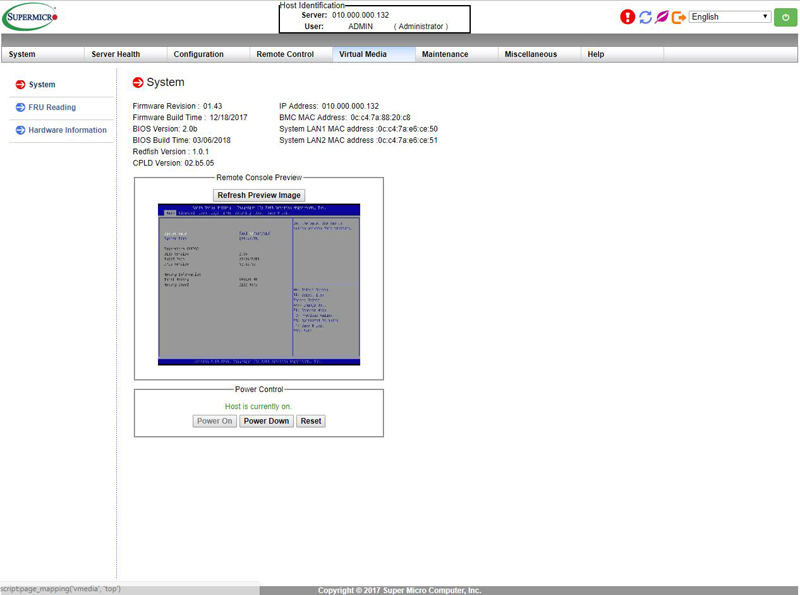
The Supermicro X11DAC can run under iKVM or VGA outputs as you would expect systems like this would. However, switching over to graphics cards that provide video output to your displays presents a few extra steps as we found on the X11DAi-N Workstation motherboard.
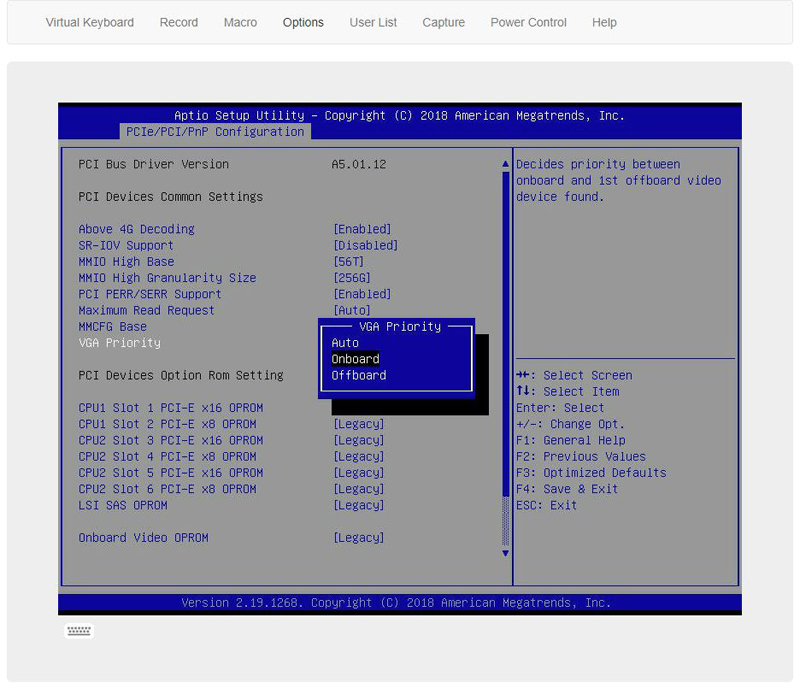
On the first bootup of the X11DAC, we ran into a common problem with some Supermicro workstation motherboards; we had no video output. When getting our system up and running, we found that before installing your graphics cards connect your machine to your network and bring up iKVM, or by using a VGA monitor connected to the motherboard VGA port. By default VGA Priority is set to Onboard, this will only work with iKVM or VGA. Set VGA Priority to Offboard, save and shut down. You can now install your graphics card and display. Reboot and the system should output to the connected display.
There is also an Auto setting; this worked on our board and allowed us to use a GPU on the next reboot. If you are adding additional GPUs to the X11DAC, you will want to ensure you have this set properly.
Supermicro X11DAC Block Diagram
In complex dual socket servers, the way I/O is mapped can have an impact on performance. To aid our readers’ evaluations, we add block diagrams to our reviews. Here we see the block diagram of the Supermicro X11DAC.
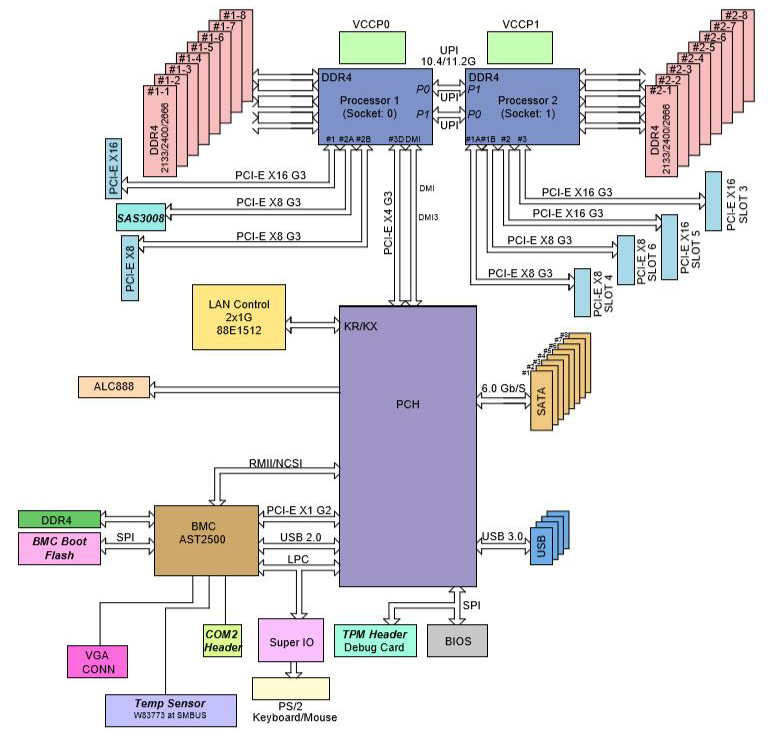
We spot the LSI 3008 SAS3 controller coming off of the first processor (Socket 0), gives SAS3 RAID functions even with only one processor installed. Unlike some competitive platforms, all of the primary I/O is attached to Socket 0. Socket 1 adds compute RAM slots, and additional PCIe functionality. This is our preferred design since it allows for the platform to be functional even with a single CPU installed. For workstation builders, that means you can use the X11DAC as a common platform for single and dual socket workstations and offer an upgrade path to customers without replacing the motherboard.
Test Configuration
Our basic test configuration for this motherboard is as follows:
- Motherboard: Supermicro X11DAC Workstation/ Server Motherboard
- CPU: 2x Intel Xeon Gold 6134
- GPU: ASUS Strix GTX1080
- Cooling: Dynatron LGA3647 B5 Narrow
- RAM: 12x MICRON 16GB Low Profile
- SSD: Samsung 256GB
- OS: Windows 10 Pro
Let us move on to our benchmark results.
AIDA64 Memory Test
AIDA64 memory bandwidth benchmarks (Memory Read, Memory Write, and Memory Copy) measure the maximum achievable memory data transfer bandwidth.
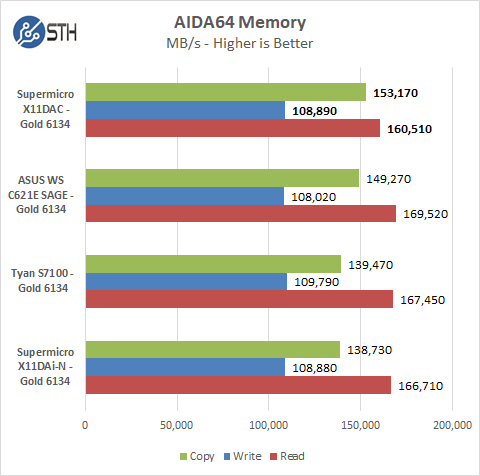
Cinebench R15
Cinebench R15 is a rendering benchmark. Here is what we see on the platform:
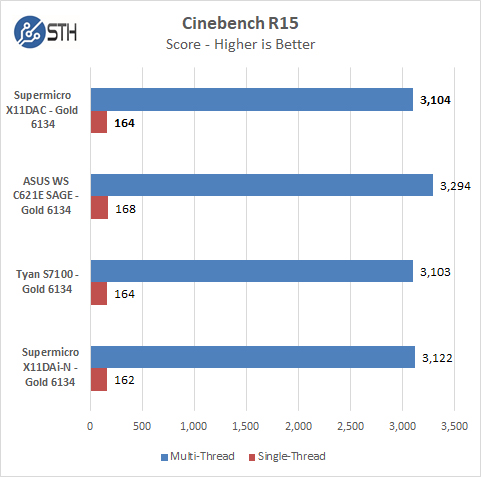
Geekbench 4
Geekbench 4 measures the compute performance of your GPU using image processing to computer vision to number crunching.
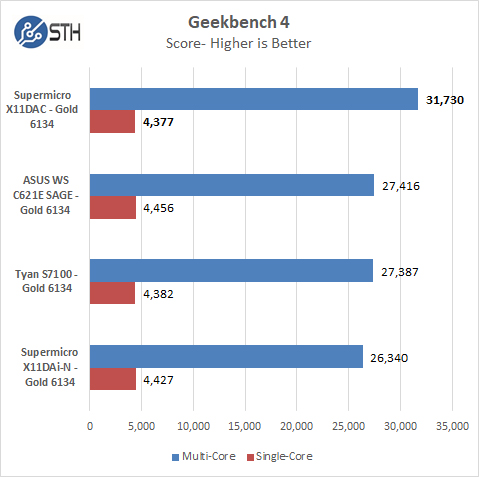
PCMark 8
With PCMark 8 you can test the performance of all types of PC, from tablets to desktops. With five separate benchmark tests plus battery life testing, PCMark 8 helps you find the devices that offer the perfect combination of efficiency and performance. PCMark 8 is the complete PC benchmark for home and business.
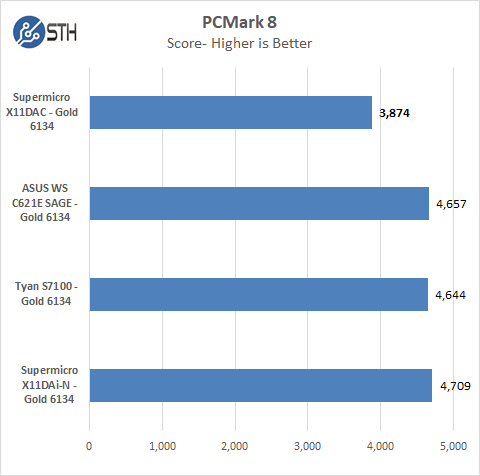
PCMark 10
The X11DAC is our first motherboard to run PCMark 10; we will populate more PCMark10 results as reviews come in, we wanted to show this as another result for comparison:
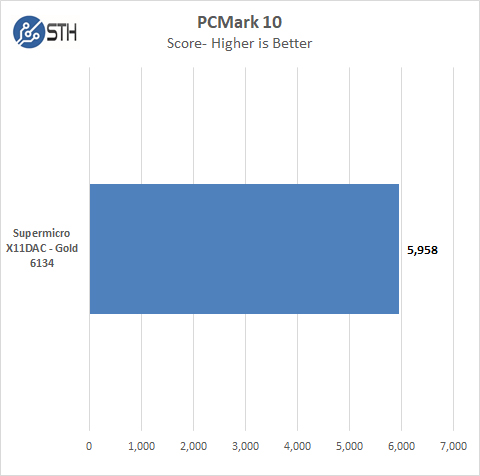
PassMark 9
PassMark PerformanceTest allows you to benchmark a PC using a variety of different speed tests; it tests the entire PC and all its component’s.
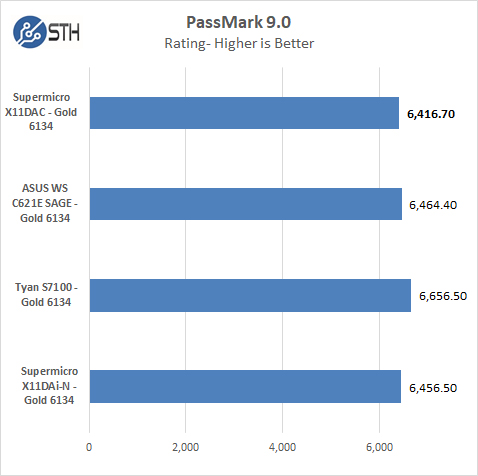
Our tests show results in-line with what we would expect from this platform.
Conclusion
The Supermicro X11DAC opens up possibilities for fast storage arrays with the onboard LSI Broadcom SAS3008 HBA, freeing up valuable PCIe slots. One feature we miss a great deal is an M.2 slot found on the X11DAi-N. There is simply no space for this on the X11DAC, so NVMe storage will be added via PCIe expansion slots.
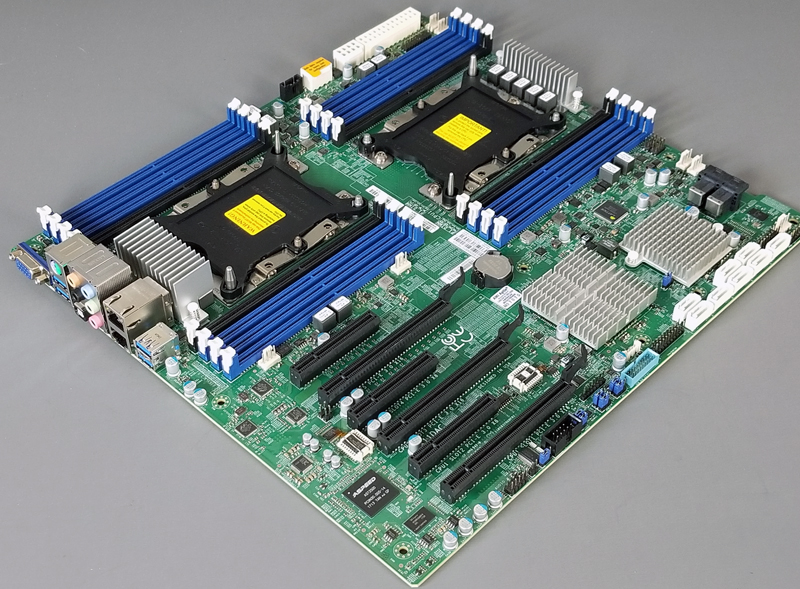
As with most Supermicro motherboards, IPMI/iKVM comes with the board; this is a great way to run headless setups like compute only GPUs. It also means that the system can be installed either desk-side or in a remote access rackmount. Either way, having IPMI/ iKVM means that an IT administrator can remotely access a system bringing the ultimate level of support to users.
We would prefer that the BIOS sets video out as “Auto” instead of “Onboard” by default BIOS settings, this would save the extra steps of connecting to a network and bringing up IPMI to do the switch. Generally, Supermicro sets up these boards with a specific system in mind, so these extra BIOS steps are not a problem unless you want video out from your GPUs.
We would also like to see this motherboard with 10G network capability. With GPUs installed, most of the PCIe x8 slots will be covered leaving few slots for NVMe storage or high-speed networking. Swapping to the Intel C622 or higher chipset would add cost to enable this. There is a practical reason we see why Supermicro did not do this. There is no room for larger SFP+ cages or 10Gbase-T headers on the motherboard. We understand the trade-off.
Overall, the X11DAC is an excellent motherboard with the quality and features we have come to expect from Supermicro products.

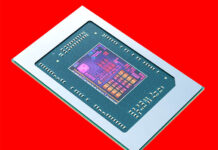

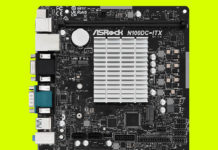
This is indeed very nice board, but I can’t resist to feel just a pity that it’s not that competitive at least not in comparison with AMD/Supermicro offerings. Or am I missing something? All your EPYC reviews just crushes Intel these days so why would anybody sane to buy Xeon-SP for the workstation?
What’s even more pity IMHO is that Supermicro has not used their precious resources to do proper Threadripper2 board to compete with Xeon-W or even simple workstation class board with AM4+ for Ryzen to compete with Xeon E.
SuperMicro is pretty bad in making proper EPYC boards and since they have the same socket as TR it wouldn’t be my first choice. From what I know at the moment is that ASUS, Asrock(Rack) and gigabyte are pretty good with both EPYC and TR.
P.s. with SuperMicro EPYC MB’s the connections from the motherboard and the SoC have a lot of connection problems.
@Misha: Asrock(Rack) does not provide any EPYC nor TR board. Asrock (non-rack) provides TR boards, but they are all like flashing gamers boards with silly coolers like well from any other gaming board. Gigabyte provides one EPYC board and flashy gaming TR. Asus provides none EPYC none TR board (in server/workstation section). Supermicro provides at least 1 single EPYC and 1 dual EPYC board with several variations in storage.
Honestly if there would be some profi board for simple Ryzen 2700x like there is Supermicro X11SCA/X11SCZ, I would be happy man…
If you have a second, please let me know the board(s) you are talking about. Thanks! Karel
The reason people want Xeon instead of TR is easy, more memory. Instead of EPYC is easy, 1-2 NUMA instead of 4-8.
@KarelG
ASRock Rack EPYCD8 Single Socket ATX Server Motherboard
By Patrick Kennedy – June 26, 2018
Since I off load most hardware functions from the integrated PCH on the motherboard (RAID, LAN, USB…), would like to see testing that measures the performance of the M.2 connection functioning as a x4 PCIe electrical lane slot, along with throughput values for each of the x16 PCIe electrical slots to compare native x16 electrical lanes with switched x16 electrical lanes. Expensive as the Intel based CPUs and motherboards are, I still have a preference for single and dual configuration motherboards for workstation applications that support Intel CPUs since I can get Intel based motherboards with (4) double spaced x16 PCIe electrical lane slots, with a X16 PCIe electrical lane slot in the bottom peripheral position (furthest from hot CPU and RAM memory) along with up to (8) simultaneously active x8 PCIe electrical lane slots or (4) double spaced x16 PCIe electrical lane slots along with (2) x8 PCIe electrical lane slots and (1) x4 PCIe electrical lane slot on a single, dual CPU motherboard (e.g. Supermicro X11DAC Workstation Motherboard), off loading most every hardware resource and currently not the case with any OTC, AMD supported motherboard. All of the single CPU TR and EPYC boards, even though they have 64 PCIe lanes for each CPU, having less hardware capacity for off loading resources with just (2) x16 PCIe electrical lane slots and just a x8 PCIe electrical lane slot in the bottom peripheral position or just (3) x16 PCIe electrical lane slots on a dual CPU EPYC motherboard with a couple x8 PCIe electrical lane slots to accompany the few x16 PCIe electrical lane slots.
@Park McGraw
EPYC hast 128 PCIe slots on a single socket. The AsrockRack board has 4 x 16PCIe electrical and 3 x 8PCIe electrical. Perfectly for off loading most hardware functions from the integrated PCH I would say.
@Misha: that’s a cool looking motherboard for EPYC indeed. The problem it’s not listed yet on asrockrack side which probably means it’s not awailable yet. Also, EPYC itself is a bit low on max freq. when you need single-threaded job to perform — which is the case for engineering workstation. I’m not sure this board supports TR/2, does it? But anyway, thanks a lot for the reference, will keep my eyes on it too…
@KarelG: page S-38 of the 2018 catalog from AsrockRack.
EPYC is low on clock, but now it is cracked, just wait a week or two and the guides will be all over the internet.
6+1 VRM’s so a 3.5..7 GHz below 300 Watt’s should be no problem, with a bit higher voltage on the RAM you can get CL16 (instead of CL19) with DDR4-2666. Have a look at Der8auer on youtube what you can expect.
Does one of the LAN ports double as IPMI port?
Hello Misha Engel
My post is confusing for I made an error, the Supermicro board I am reference is X11DPX-T, not X11DAC.
Please reference URL: https://www.supermicro.com/products/motherboard/Xeon/C620/X11DPX-T.cfm
The Supermicro X11DPX-T motherboard will permit for the installation of (4) double spaced x16 PCIe electrical lane slots, with a X16 PCIe electrical lane slot in the bottom x16 peripheral position (furthest from hot CPU and RAM memory) [ALONG WITH] (2) x8 PCIe electrical lane slots and (1) x4 PCIe electrical lane slot on a single, dual CPU motherboard, or up to (10) simultaneously active x8 PCIe electrical lane slots.
Thus for a double CPU Intel application that is fully populated, can configure (4) double width x16 PCIe lane cards [PLUS] (2) single width x8 PCIe lane cards and (1) single width x4 PCIe lane card all in simultaneous use for a total of 78 PCIe lanes (multiplexed) for a total physical requirement of (11) case peripheral slots.
The single CPU Asrock board is not sufficient since it will only permit (4) double spaced x16 PCIe electrical lane slots or up to (7) simultaneously active x8 PCIe electrical lane slots and no more, for the (3) x8 PCIe electrical lane slots are not mechanically available when a double space peripheral card is installed in the x16 PCIe slot. The Asrock permits a max of 64 PCIe lanes (multiplexed) for a total physical requirement of (7) peripheral slots or (8) peripheral slots if a double width board is installed in the bottom x16 PCIe slot.
The EPYC uses 64 of the 128 PCIe lanes to communicate to the other CPUs and not available as PCIe slots.
My workstation (custom, double width Caselabs STH10 case with pedestals) has (2) 12G RAID controllers, (3) 12G RAID expanders, (68) active and (10) spare drives, (11) active PCIe slots, (17) active boards using (20) case peripheral slots, powered via a 1500W and 1200W power supplies along with internal, integrated 1500VA UPS. The unit weighs about 250 pounds with custom caster base, stands about 49″Hx22″Wx29″D.
Hello Misha Engel
My post is confusing for I made an error, the Supermicro board I am reference is X11DPX-T, not X11DAC.
The Supermicro X11DPX-T motherboard will permit for the installation of (4) double spaced x16 PCIe electrical lane slots, with a X16 PCIe electrical lane slot in the bottom x16 peripheral position (furthest from hot CPU and RAM memory) [ALONG WITH] (2) x8 PCIe electrical lane slots and (1) x4 PCIe electrical lane slot on a single, dual CPU motherboard, or up to (10) simultaneously active x8 PCIe electrical lane slots.
Thus for a double CPU Intel application that is fully populated, can configure (4) double width x16 PCIe lane cards [PLUS] (2) single width x8 PCIe lane cards and (1) single width x4 PCIe lane card all in simultaneous use for a total of 78 PCIe lanes (multiplexed) for a total physical requirement of (11) case peripheral slots.
The single CPU Asrock board is not sufficient since it will only permit (4) double spaced x16 PCIe electrical lane slots or up to (7) simultaneously active x8 PCIe electrical lane slots and no more, for the (3) x8 PCIe electrical lane slots are not mechanically available when a double space peripheral card is installed in the x16 PCIe slot. The Asrock permits a max of 64 PCIe lanes (multiplexed) for a total physical requirement of (7) peripheral slots or (8) peripheral slots if a double width board is installed in the bottom x16 PCIe slot.
The EPYC uses 64 of the 128 PCIe lanes to communicate to the other CPUs and not available as PCIe slots.
My workstation (custom, double width Caselabs STH10 case with pedestals) has (2) 12G RAID controllers, (3) 12G RAID expanders, (68) active and (10) spare drives, (11) active PCIe slots, (17) active boards using (20) case peripheral slots, powered via a 1500W and 1200W power supplies along with internal, integrated 1500VA UPS. The unit weighs about 250 pounds with custom caster base, stands about 49″Hx22″Wx29″D.
@Park McGraw
With the Asrock board and it’s user selectable free PCIe (16×4+8×3=88 PCIe-3 lanes) you can do whatever you want with the use of PCIe-riser cable’s and bifurication of the PCIe Lanes. 22×4 – 16×4+8×3, 2×32+1×24 or whatever you can think of.
Hello Misha Engel
The Asrock EPYC board like the Intel based ASUS X99-E-10G WS (I reviewed on Amazon), will not provide the 88 PCIe lanes you are making claim too simultaneously. The Asrock user does not have available as is the situation with like boards, the option to use both the 16 electrical lane PCIe x16 slot and the adjacent 8 electrical lane, PCIe x 8 slot being that the adjacent 8 lane PCIe slot is a bifurcated then switched 8 lanes derived from the associated 16 electrical lane, PCIe x16 slot. Hence the user has available a single, x16 electrical lane PCIe x16 slot, or (1) x8 electrical lane PCIe x16 slot and (1) x8 PCIe x8 slot, not both the 16 electrical and 8 electrical slots at the same time, it being an either or situation. The Supermicro X11DPX-T board functions in much the same manner as the nicely fitted, dual Xeon, Intel W2600CR2 motherboard.